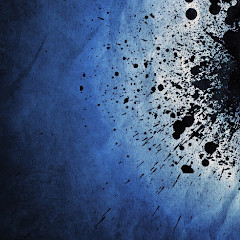
Iconic base for 19th-century excavations of an ancient city, designed to resemble a medieval castle.
Photos
There are no photos for this place yet!
Reviews — 8




There are plenty of steps and ramps and it's not wheelchair accessible both worth a visit







If you are fond of history, especially the Elam era , Shush Castle is highly recommended. There is a museum in this castle, and there are so many antiques that are discovered in Choghazanbil ziggurat.

Shush Castle is a castle built by the French Jacques Demorgan to house French archaeologists near the tomb of Daniel Nabi in Shush on a historical hill. Among the most important works obtained from these hills, we can mention the famous statue of Queen Napier of Osweston, the famous pea-colored Susa terracotta mug with goat pattern, and the law of Hammurabi.

Shush Castle (French: Château de Suse) is located in the ruins of the ancient city of Susa (Shush) in the Khuzestan Province of Iran. It was constructed by French archaeologist Jean-Marie Jacques de Morgan in the late 1890s, as a secure base for archaeological exploration and excavation. The Castle is similar to medieval monuments in France. The structure was built by local craftsmen with bricks taken from two other archaeological sites, the Achaemenid Darius/Dariush castle and the Elamite Choqazanbil ziggurat.

Susa Castle is a castle built by Jacques Demorgan for the residence of French archaeologists near the tomb of Daniel the Prophet in Susa on a historic hill. The most important artifacts obtained from this hill include the famous statue of the Queen Mother of Estonia, the famous emerald-colored emerald glass of Shush, and the role of a mountain goat and Hammurabi's law. The castle has a medieval plan.









Shush Castle, dates from the 1890's, and has been built to serve as a hotel for the French archeologists that came to excavate the Apadana site in Shush. Most of the castle has been built with mud bricks found on the excavation site. Some of these bricks still show the original decoration that was painted on them.

Shush Castle (French: Château de Suse) is located in the ruins of the ancient city of Susa (Shush) in the Khuzestan Province of IRAN🇮🇷.
It was constructed by French archaeologist Jean-Marie Jacques de Morgan in the late 1890s, as a secure base for archaeological exploration and excavation.
The Castle is similar to medieval monuments in France.
The structure was built by local craftsmen with bricks taken from two other archaeological sites, the Achaemenid Darius/Dariush castle and the Elamite Choqazanbil ziggurat.
It is built atop a hill (in Persian:"tappeh") which may contain other relics of past times.
It is an example of the pre-scientific era of archaeology, when explorers mutilated or destroyed sites in the process of examining them.
The former French government property was taken over by the Islamic Republic after the Iranian Revolution in 1979.
It is now used as a museum.
Its best-known holding is a cuneiform tablet inscribed with the Code of Hammurabi, however it was stolen and now is on display in the Louvre Museum in Paris, France.
The castle was heavily damaged by Iraqi bombs during the IRAN–Iraq War (1980-1988) but has since been completely restored by the Iranian government.
It was constructed by French archaeologist Jean-Marie Jacques de Morgan in the late 1890s, as a secure base for archaeological exploration and excavation.
The Castle is similar to medieval monuments in France.
The structure was built by local craftsmen with bricks taken from two other archaeological sites, the Achaemenid Darius/Dariush castle and the Elamite Choqazanbil ziggurat.
It is built atop a hill (in Persian:"tappeh") which may contain other relics of past times.
It is an example of the pre-scientific era of archaeology, when explorers mutilated or destroyed sites in the process of examining them.
The former French government property was taken over by the Islamic Republic after the Iranian Revolution in 1979.
It is now used as a museum.
Its best-known holding is a cuneiform tablet inscribed with the Code of Hammurabi, however it was stolen and now is on display in the Louvre Museum in Paris, France.
The castle was heavily damaged by Iraqi bombs during the IRAN–Iraq War (1980-1988) but has since been completely restored by the Iranian government.